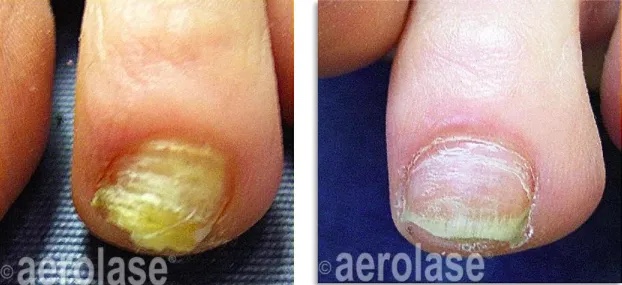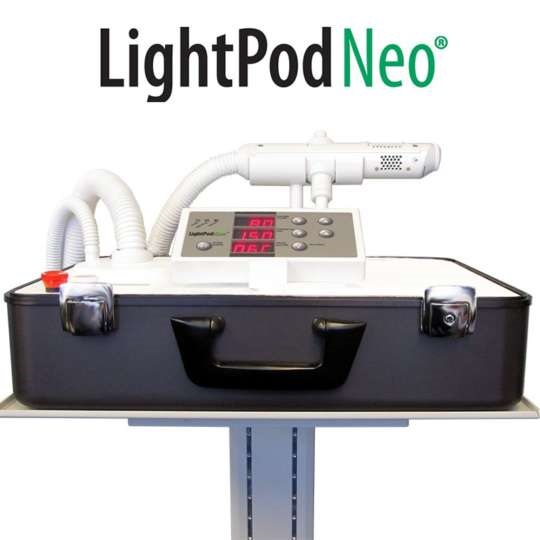
Many people develop a fungal nail infection at some point in their life. It’s typically not serious but can be unpleasant and very difficult to treat.
Fungal-infected nails develop slowly and cause the nail to become discolored, thickened, and distorted. The medical name for a fungal nail infection is onychomycosis. Don’t cover up your nails with polish or closed toe shoes, there are various treatments options to eliminate the fungus.
 Signs and symptoms of a fungal nail infection:
Signs and symptoms of a fungal nail infection:
At the early stages a fungal infection may not be obvious. As it progresses the infection can cause:
- Discoloration of the nail. It may turn white, black, yellow, or green.
- Thickening or distortion of the nail, the nail may become an unusual shape or texture and be difficult to trim.
- It may lead to pain or discomfort, particularly when using or placing pressure on the affected toe or finger.
- Brittle or crumbly nails. Pieces of your nail may break off or come away completely.
- Foul odor, debris may build up underneath the nail causing an unpleasant odor.
The infection can spread to other nails on the hands or foot compounding the problem. In some instances, it may spread to the nearby skin.
Causes and risk factors of nail fungus infections
While fungal nails can be embarrassing, it doesn’t mean you have bad hygiene. Anyone can develop nail fungus. The root cause is exposure to a fungal organism that usually enters the nail through a crack in the nail or a cut in the nearby skin. Yeast and molds can also cause nail infections. You may also acquire a fungal nail infection if you share clippers with someone else.
Certain factors can increase your risk of developing a nail fungus.
- Sweating heavily
- Having a history of athlete’s foot
- Walking barefoot in damp communal areas, such as swimming pools, gyms, and shower rooms.
- Having a minor nail or skin injury
- Weakened immune system or having a chronic disease
- Wearing tight shoes with a narrow toe box
Common treatment options for toenail fungus
Fungal nails are notoriously difficult to treat with home remedies alone. Many people resort to antifungal tablets or antifungal nail paints. These typically will need to be administered over several months.
Here at Maricopa Wellness Center we offer the Aerolase Neo laser to treat fungal infections.

Clinical research has shown that the Neo laser is capable of effectively superheating the skin tissue beneath the finger and toenails, causing the coagulation of the soft tissue that is contaminated with fungal material. This can result in a significant cosmetic enhancement for patients in as little as one treatment. Treatment of nails with the Neo laser is fast, convenient, and comfortable. Most treatments can be done in as little as 10 minutes. The Neo laser is also highly effective in treating warts, spider veins, and other conditions of the foot and ankle.
Call today to schedule a consultation and get back into open toed shoes.
520-464-6193
MaricopaWellnessCenter.com
41600 W. Smith-Enke Road
Building 14, Suite 3
This sponsored content was first published in the March edition of InMaricopa magazine.
















![Who’s the Best Mom InMaricopa? Nominate now! Marlene Marshall, Christina Olivares, and Meghan Bremer. [Bryan Mordt]](https://www.inmaricopa.com/wp-content/uploads/2023/05/BCM_8465-100x70.jpg)
